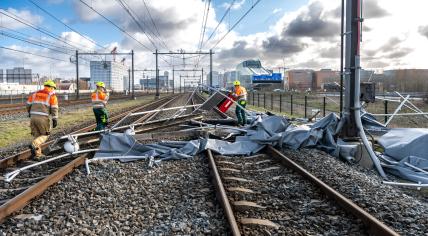
Extreme weather caused record amount of damage last year: Insurers
Extreme weather caused a record amount of damage in the Netherlands last year at over 886 million euros. The Dutch Association of Insurers (VvV) reports this in its Climate Damage Monitor on Thursday.
By far the most damage (714 million euros) was caused by the tree storms that left a trail of destruction in February 2022: Eunice, Dudley, and Franklin. The storm damage was considerably higher than the over 500 million euros that the insurers initially estimated.
The previous record was set in 2016 when insurers received a total of 770 million euros in claims related to extreme weather. Most of that damage was caused by hail. These figures go back to 2007.
“Extreme precipitation and storms are costing society more and more money. The impact of climate change is evident. We must do everything we can to make the Netherlands climate-proof,” said VvV general director Richard Weurding in a statement.
There is some debate about the influence of climate change on winter storms. Last year, KNMI climate experts said global warming played “no significant role” in winter storms. “The influence of climate change on the formation of winter storms is small and dwarfed by the large year-to-year variations in our winter wind climate. However, in a warmer climate, the amount of precipitation associated with these storms increases,” the KNMI said.
Scientists have established that other natural disasters are increasingly likely due to global warming. For example, there is a bigger chance of extreme rainfall in Western Europe, as happened in the summer of 2021. Then parts of Zuid-Limburg, Germany, and Belgium flooded. In the same year, fall winds hit Leersum in Utrecht hard. According to the KNMI, the chance of this is also increasing because of the increasingly warmer climate.
According to Weurding, more awareness is needed to prevent weather damage. “How do we prevent damage, build safely, and how do we adapt? Only then can we continue to guarantee insurability for people and companies in the long term.”
The insurance sector is working closely with the meteorological institute KNMI on this point. To issue timely warnings, the institute is building an Early Warning Center. The idea is that damage can be limited if risks can be better estimated in advance.
Reporting by ANP
